Ancient Noseo-dong Tombs
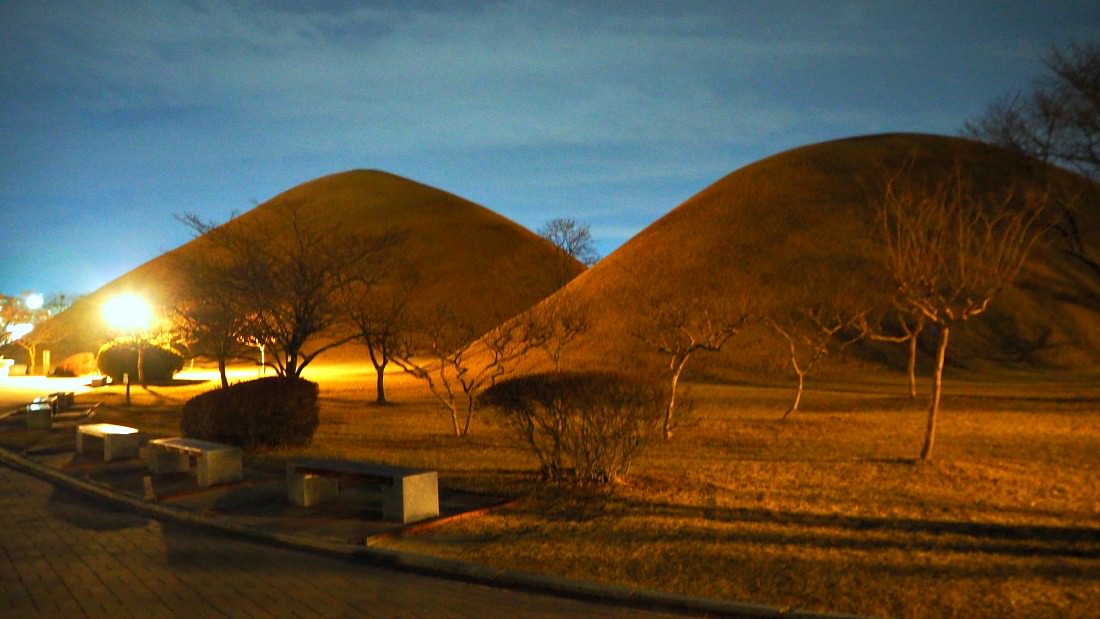 Royal graves shaped like small hills in Gyeongju City. Gold crowns were unearthed 6 of these grave mounds.
Royal graves shaped like small hills in Gyeongju City. Gold crowns were unearthed 6 of these grave mounds.Noseo-dong Tombs
Noseo-dong Tombs are ancient graves in the shape of huge mounds somewhat like small hills. These tombs were built during the Silla King between the 4th and 5th centuries.
Noseo-dong Tombs are located in the central part of Gyeongju City in Noseodong District. It means that these ancient burial mounds are very accessible.
I arrived around 6 PM in Gyeongju City during my first travel to Gyeongsangbukdo (Province). So, it was just getting dark when I arrived at my hotel, which was located just some meters from the Gyeongju Bus Terminal.
To save time, I thought that I should start my exploration this early evening and take some photos. As I walked just a couple of blocks from where I stayed, I immediately notice a hill.
Then I realized that it was not a hill but a burial mound--an ancient tomb where a royal could have been buried. Then I was overwhelmed when I saw there are more of them. I realized that I was in a park of ancient tombs (in Noseo-dong District).
Getting very excited, I spent about half an hour taking photos, as you can see below...
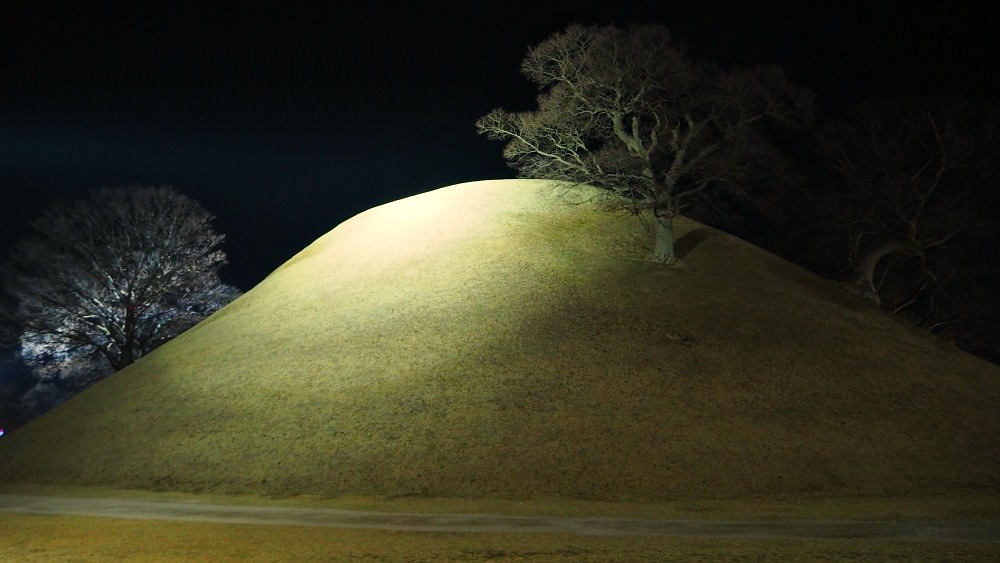 Noseo-dong Tomb, Gyeongju City
Noseo-dong Tomb, Gyeongju City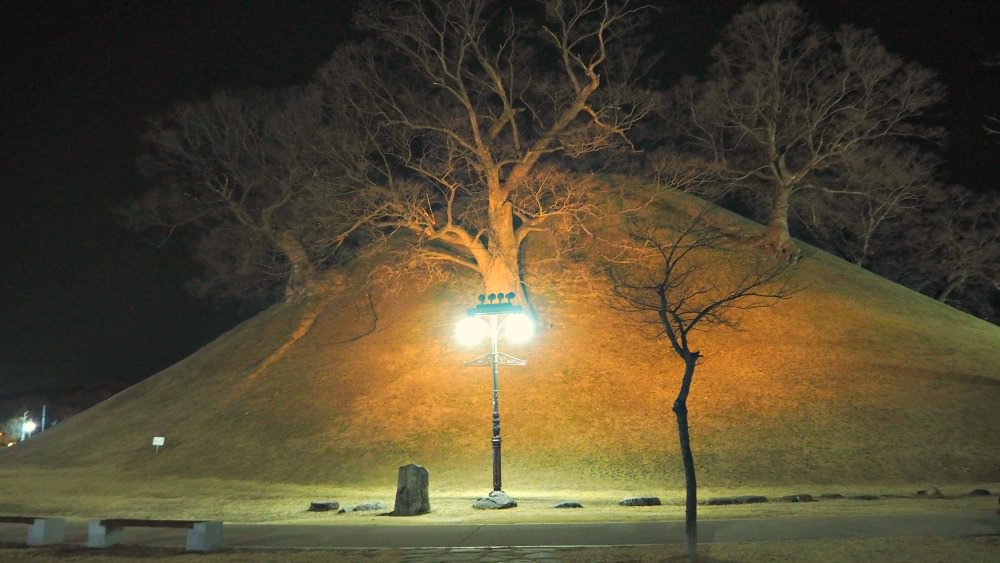 Sight of the mound at night time
Sight of the mound at night time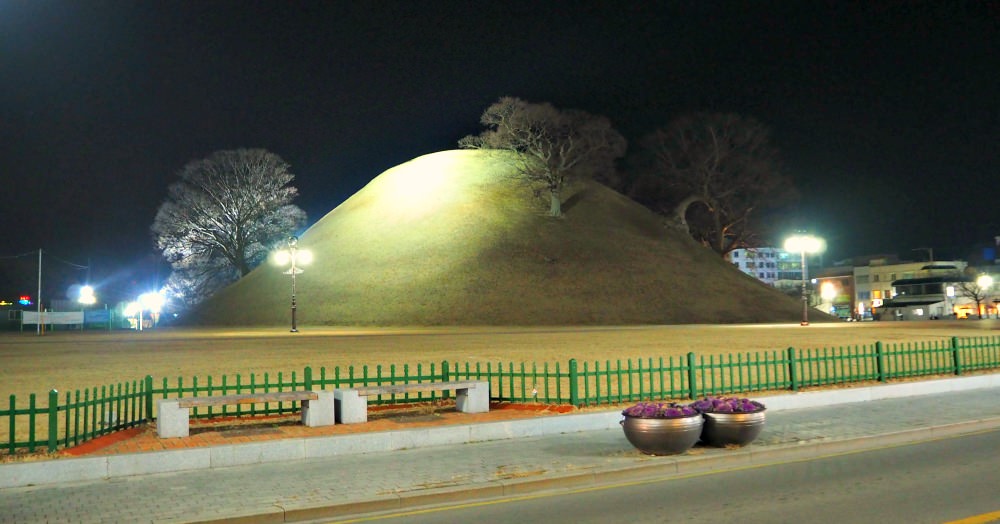 Tomb in the middle of Gyeongju City
Tomb in the middle of Gyeongju City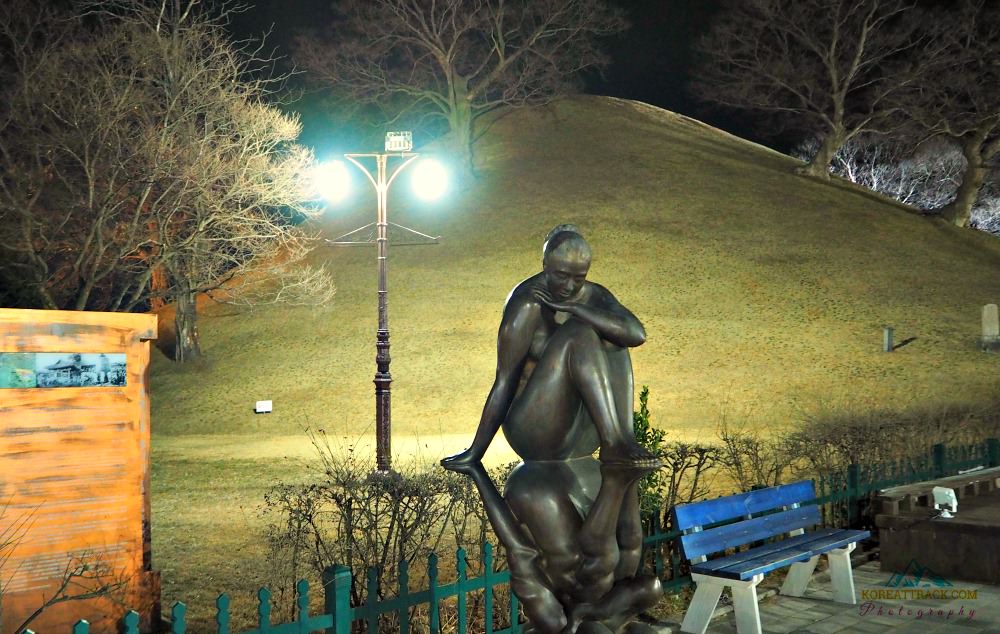 Noseo-dong Tombs Park, Gyeongju City
Noseo-dong Tombs Park, Gyeongju CityAmong the famous tombs at Noseo-dong district are Seobongchong Tomb and Geumgwanchong Tomb. (See more details through their respective links).
Each of the tombs was named based on special features or events that occurred before they have been assigned named. The reason for making up names for each grave is because excavators and authorities are not really sure who was buried in those tombs.
Indeed, we can guess that there used to be headstones per tomb. However, through the passage of time, decay, wars, occupation of the area, agricultural, housing, or any circumstance could have caused the headstones or any mark that points to the dead royal being buried underneath.
For example, the excavators found a gold crown and so named the tomb "Geumgwanchong," which means gold crown.
For Seobongchong Tomb, a Swedish honeymooner discovered a gold belt, and so they named it to reflect the meaning of that event ('seo' is for 'Swedish'), and 'bong' is for 'belt'). The excavators also found a gold crown at Seobongchong Tomb.
Both Seobongchong and Geumgwanchong tombs were unearthed in 1921 and 1946, respectively.
Another prominent tomb belonging to Noseo-dong Tombs is Bonghwadae Tomb. It is located along the roadway and can be easily recognized as it has some trees poking out of it conspicuously.
Bonghwadae is also an ancient Silla burial mound that stands at 22 meters high with a total area of 250 meters. It is located adjacent to Geumnyeongchong, another tomb at this park.
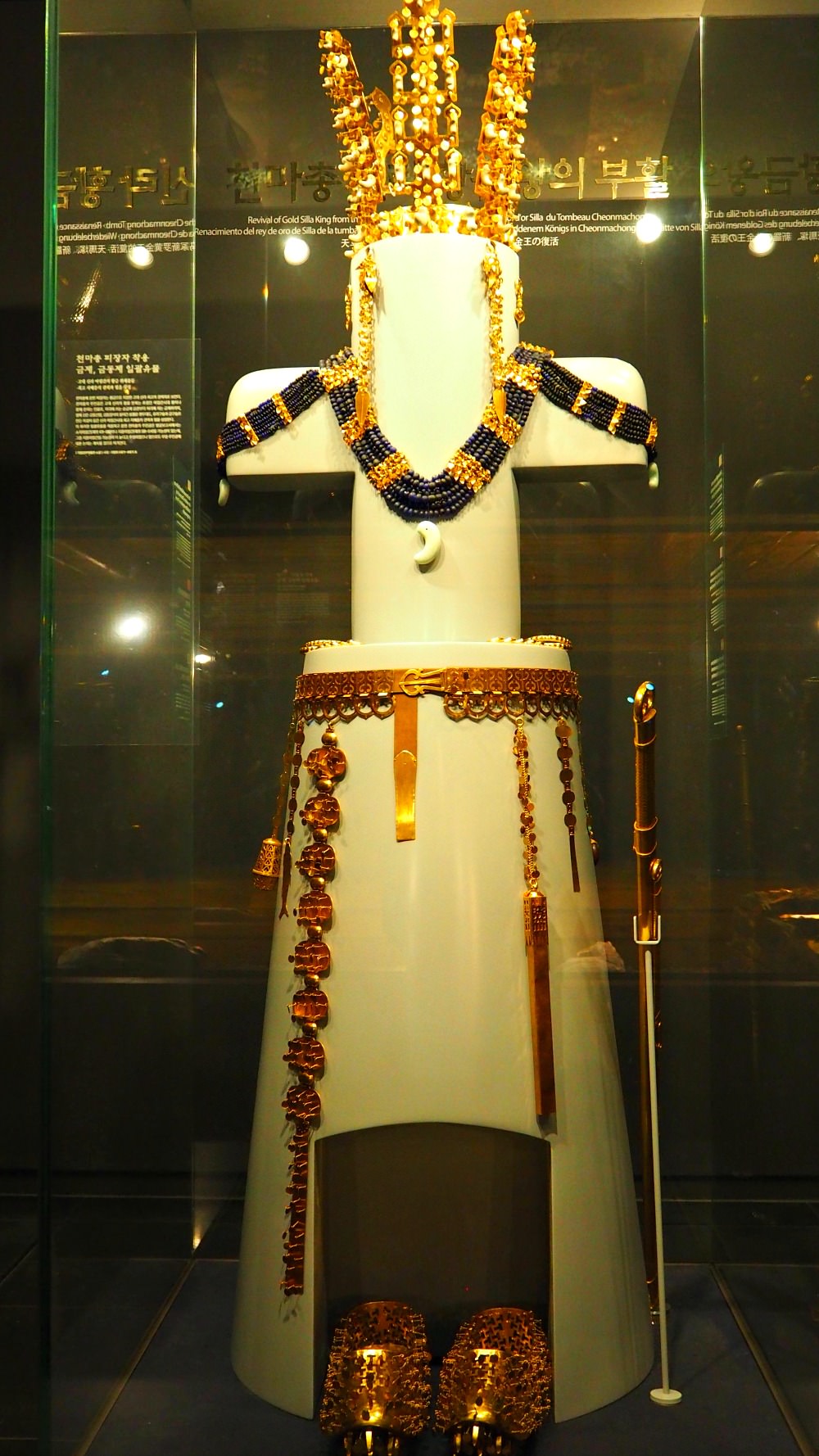
Although I went to explore Noseo-dong in the evening, I noticed that it
is spacious, has well-trimmed grass (including the mounds), and clean
from other structures. However, they said that it used to be dotted with
houses, but they were demolished in 1984 and turn it into a public
space as it is now.
The good thing about exploring Gyeongju City
is that you will find noteworthy sites and attractions, even within the
city. You can feel the ancient capital of the Silla Kingdom and its
ancient culture in a glimpse!
As aforementioned, Gyeongju Express
Bus Terminal and Inter-city Bus Terminal are in the city and located
near hotels and condos. So, it is a pleasant and very relaxing as much
as straightforward to experience Gyeongju City's offers.
So, let me continue...
Next to Noseo-dong burial place is Bonghwang-ro culture street. If you continue strolling, you will enter into the center of downtown, with numerous conventional restaurants and cafes to check out.
All over this location, there are traditional design houses, beautiful cobbled streets, benches where you may set down and enjoy some views of the mounds.
Exploring More...
Just around the bend from the area mentioned above, you will find Daereungwon Tomb Park(대릉원).
Daereungwon (means "great tombs park") features a more organized and developed park. To sustain the expenses for maintenance and staff, the visitors must pay for an entrance fee. It's a very minimal amount but worth your penny!
At Daereungwon, among other exciting features in this park, you will find a famous and ancient tomb named "Cheonmachong Tomb."
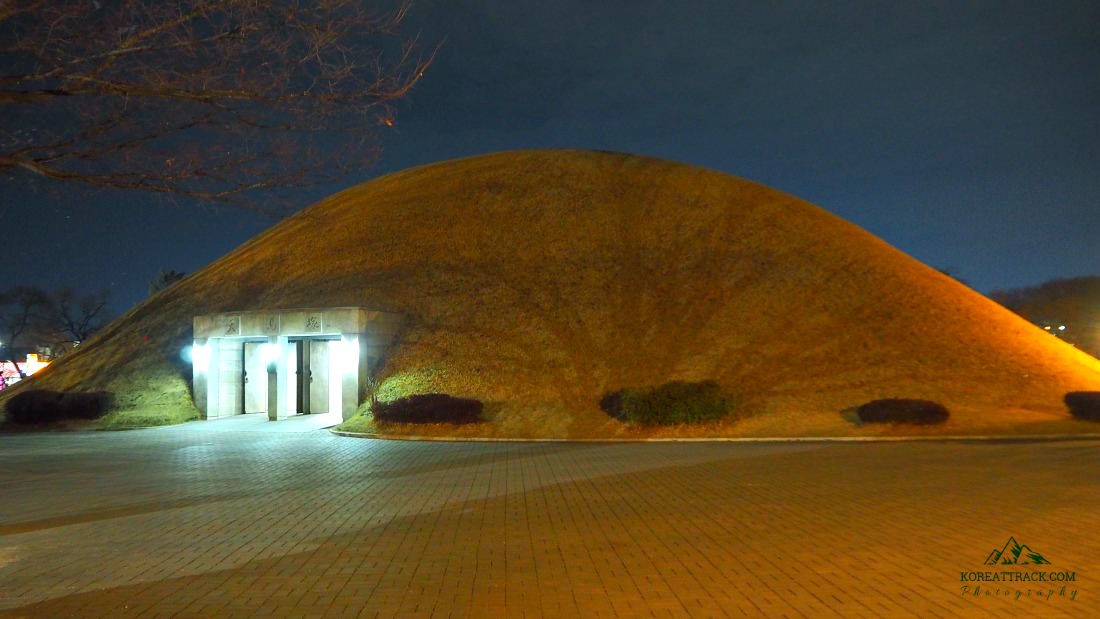 Cheonmachong attracks more curious visitors as you can actually see the inner structures and the tomb which contain the artifacts of the buried royal body.
Cheonmachong attracks more curious visitors as you can actually see the inner structures and the tomb which contain the artifacts of the buried royal body.It is a mound where you can enter and see the tomb and its artifacts buried together with a royal (still unknown, I think).
If you are interested to see and learn more about Gyeongju (and partly Seoul areas) and its most popular travel sites, please check out my articles below...
Gyeongju Brief Travel Guide
Korean Royal Tombs
Thanks for reading down to this part. I wish you the best memories of your travels.
Return to Korean Royal Tombs from Noseo-dong Tombs
Return to Korea Attracts Home from Noseo-dong Tombs

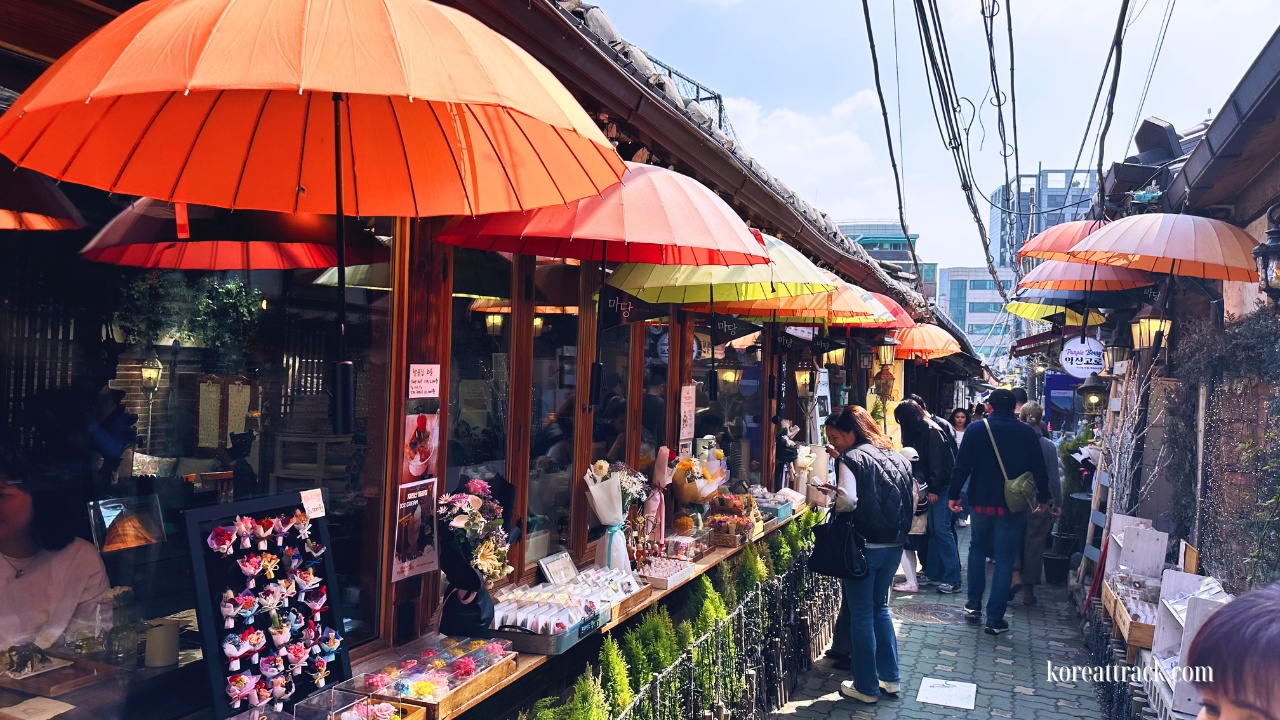
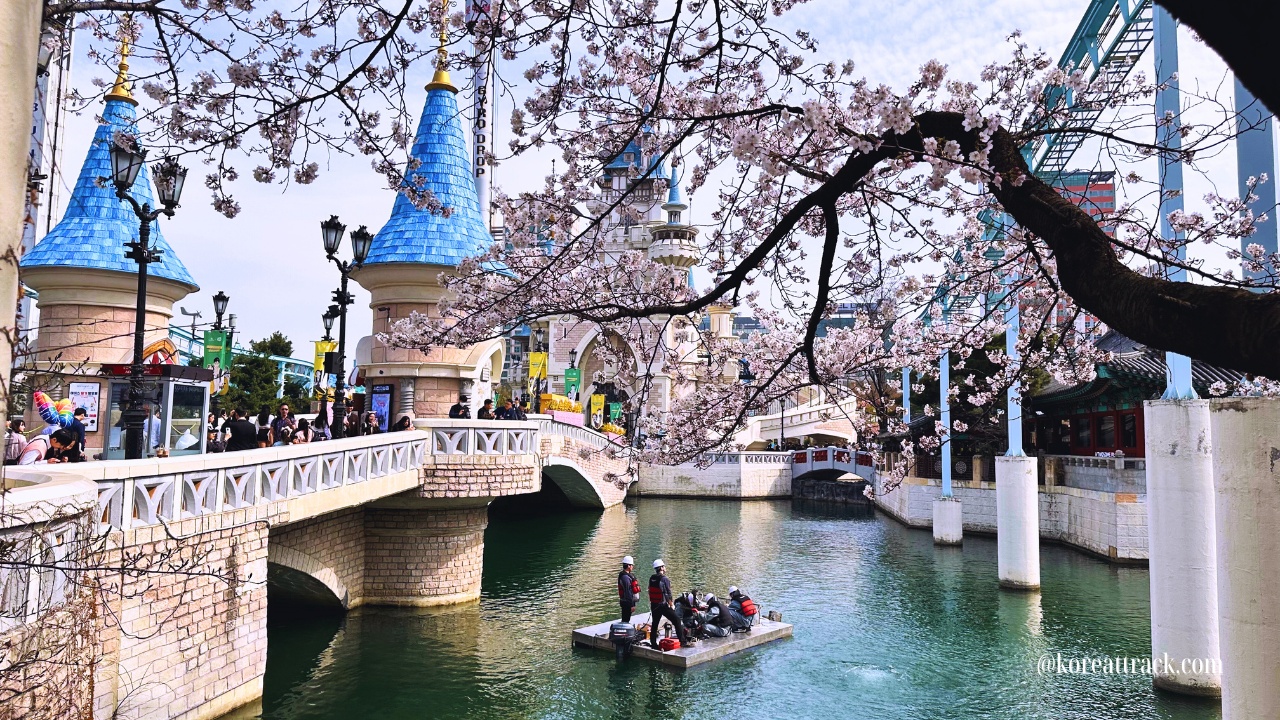

New! Comments
What do you think about this page? Leave me a comment in the box below.